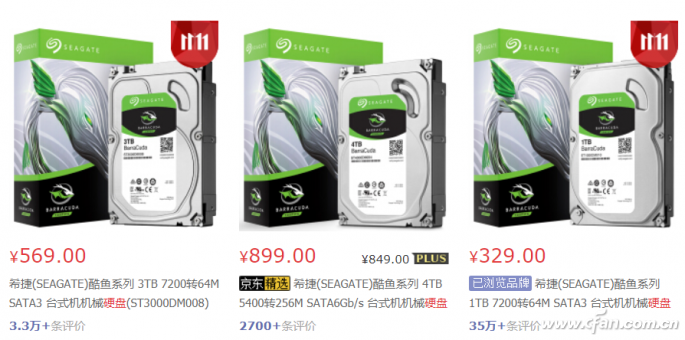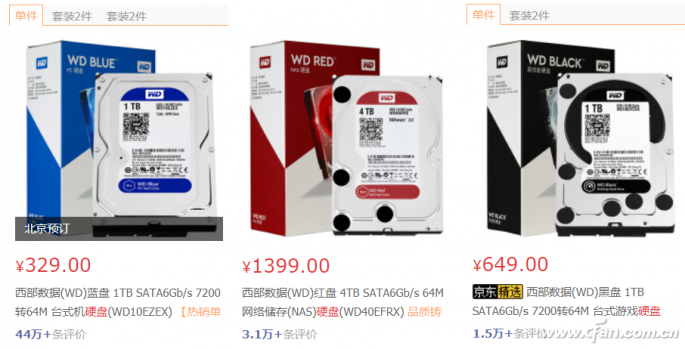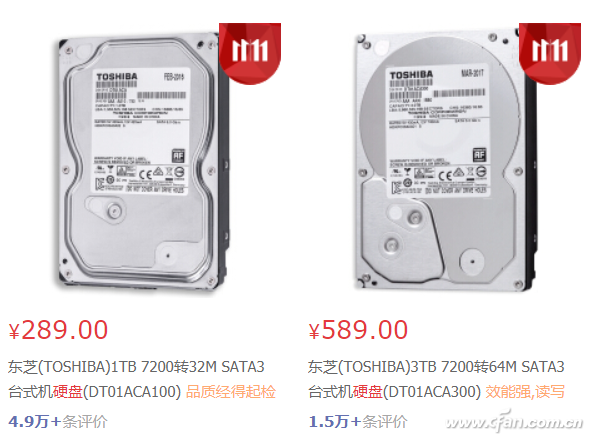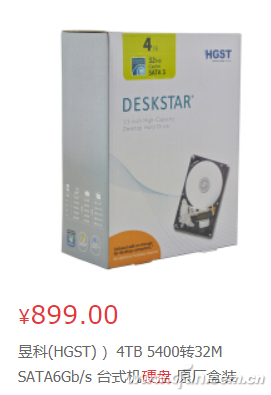Recently, the price of SSDs Xiaobian really can not say, today Xiaobian focuses on mechanical hard drives. Nowadays, there are only four brands of mechanical hard drives, namely Seagate, Western Digital, Toshiba, and Chennai. Among them, Dianke is now only a sub-brand of Western Digital. On the other hand, SSDs are less common than dozens of brands, including unknown cottage brands. In the rest of these mechanical hard disk brands, mainly TB-class capacity products are currently used. In order to differentiate the competition, a series of different use requirements are introduced, so don’t look at the small brands, the doorways are still quite numerous, and the small series Let us talk about it today.

Where are the differences between the four hard disks?
Note that Xiao Bian talks about desktop hard drives today. The notebook hard drives will be discussed later. At present, the use of mechanical hard disk is mainly divided into four: daily, NAS storage, monitoring machines, and enterprise-level.
Daily, it is not necessary to say more, mainly daily home or business; NAS storage is for the network storage function and products, focusing on product power performance, continuous operation stability; enterprise level is to support 7 × 24 continuous mode of operation, In particular, high-strength reading and writing and specially designed, of course, the most expensive price; the final is to monitor the hard disk, Xiao Bian has been strongly recommended that ordinary users use this kind of hard disk to replace their own storage NAS or desktop hard drive, because the monitoring hard disk The fault-tolerance mechanism is very broad, and the accuracy of the data has always been not good. It is only designed to ensure stable operation and continuous recording under adverse conditions. Unless it is used for monitoring video storage, it should not be selected.

Who is the highest 1 to 1 TB price/performance ratio?
Cost-effective on the hard disk can be quantified completely, Xiao Bian has a way to use the price divided by capacity, calculate the cost per gigabyte to measure which is the best deal. With regard to the various types and capacities of products currently being sold, 3TB capacity hard drives are undoubtedly the most cost-effective products. They are also sufficient for absolute capacity, and the price per GB is also very low. Of course, if it is sensitive to absolute prices, 2TB is also an option. If it is used in large-capacity backup applications on NAS storage devices, Xiao Bian recommends 4TB products, although the cost-effectiveness is lower, but the absolute capacity advantages (NAS disk limit) can not be ignored.

Which model does the 4 brands respect?
Seagate:
Seagate currently focuses on the Barracuda series for the desktop market. The difference is that the 8TB to 10TB is called Coolfish Pro series, and the Barracuda series is 1TB, 3TB, and 4TB. It is worth noting that the speed of the 4TB product is significant. It is 5,400 rpm and the rest is all 7,200 rpm.
There is a hybrid hard drive, only 1TB, 2TB capacity. This kind of compromise is very modest. It is more expensive than a traditional disk, and it is a solid alternative to a solid-state drive. If it can't be solid because of budget issues, this hybrid drive is an alternative. And currently still selling hard drives, Seagate is almost the only company that has hybrid drives.

Western Digital:
Unlike Seagate's classification, Western Digital uses color to distinguish functional differences in its products. One blue disk is for ordinary users, blue disk is mainly 1TB-3TB, is also concentrated in the price range of the best products. The black disk is for gamers, especially continuous literacy has been strengthened, the main 1TB, 2TB, 4TB hard drive, of course, the price is much more expensive, so it is not cost-effective, in short, rich, please get on the train.
As for the red disk for network storage, from 1TB up to 10TB models, features are support for long work, the price is much more expensive, do not have special needs do not consider...

Toshiba:
Toshiba itself is precarious, and there are no special products in the field of mechanical hard drives. Currently, the products are concentrated in 1TB to 3TB of 7200rpm. The feature is outstanding price/performance ratio, and according to some news reports, Toshiba's failure rate is relatively low (I don't know whether it is The volume of goods is relatively small and the proportion of samples is a problem. In addition to the sale is a 4TB monitoring hard drive, or do not touch as well.

Branch Division:
The last is the Department of Education, and the former Xiaobian also said that it is a subsidiary of Western Digital. The predecessor was Hitachi (the first word was disassembled), and the predecessor was IBM. Since it now exists as a sub-brand, it is naturally necessary to distinguish it from the Western Digital's main brand. At present, the main product is the notebook hard drive, desktop hard drive, desktop-class on a 4TB capacity product, the price is quite high, but pay attention to the speed of this hard drive is 5400 turn Oh!

In the end, Xiao Bian mentions that even if QLC's NAND is mass-produced next year and the SSD capacity is used to achieve TB, it is still far away from replacing mechanical hard drives in storage. At present, the most reliable mass storage is still mechanical hard drives. Therefore, if there is a need for a movie or game, if you need it, don't hesitate to buy it. It's not necessary to imagine that the SSD will dominate the world at least once. It will not be possible until 2020 at least.

The optical module (optical module) is composed of optoelectronic devices, functional circuits and optical interfaces. The optoelectronic device includes two parts: transmitting and receiving.
Simply put, the function of the optical module is to convert the electrical signal into an optical signal at the transmitting end, and after transmitting through the optical fiber, the receiving end converts the optical signal into an electrical signal.
The optical module is an optoelectronic device that performs photoelectric and electro-optical conversion. The transmitting end of the optical module converts electrical signals into optical signals, and the receiving end converts optical signals into electrical signals. Optical modules are classified according to the packaging form. Common ones include SFP, SFP+, SFF, Gigabit Ethernet Interface Converter (GBIC), etc.
The transmitting part is: the electrical signal with a certain code rate is processed by the internal drive chip and then drives the semiconductor laser (LD) or light-emitting diode (LED) to emit the modulated light signal of the corresponding rate. The internal optical power automatic control circuit makes The output optical signal power remains stable.
The receiving part is: the optical signal of a certain code rate is input into the module and then converted into an electric signal by the light detection diode, and the electric signal of the corresponding code rate is output after the preamplifier.
Sfp Module,Scodeno Sfp Transceiver,Scodeno Optical Transceiver,Gpon Optical Sfp Module
Shenzhen Scodeno Technology Co.,Ltd , https://www.scodenonet.com